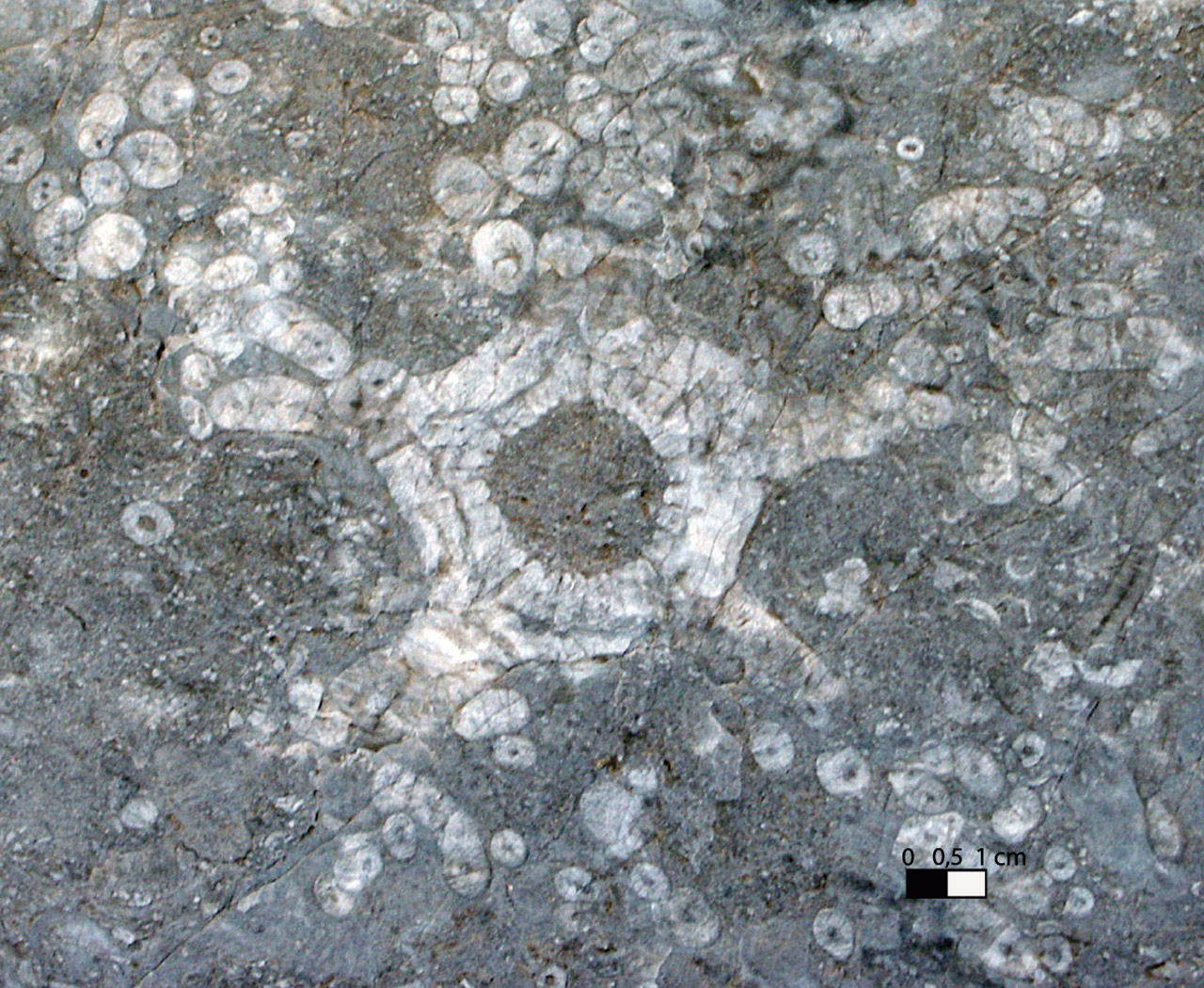This limestone rock comes from Mount Creta Chianevate. It is rich in Crinoids from 380 million years ago. Although their appearance makes them look like flowers, they are actually animals (Echinoderms, related to sea urchins and starfish) that lived anchored to the seabed thanks to a peduncle with roots. At the upper end, however, there was a crown, formed by a flower cup and many arms. In most cases, the fossils found are only some parts of these organisms. In addition to these, you can see corals and even the extinct Stromatoporoids, important reef builders related to sponges, but whose classification is still uncertain.
250 m far from here, in direction North-West (outside the route), you can find a big limestone rock dating back to 420 million years ago. It comes from Mount Rauchkofel und contains many fossils: Orthoceratides, whose shells were filled with calcite, and Loboliths, a particular example of the evolution of the Crinoids.

